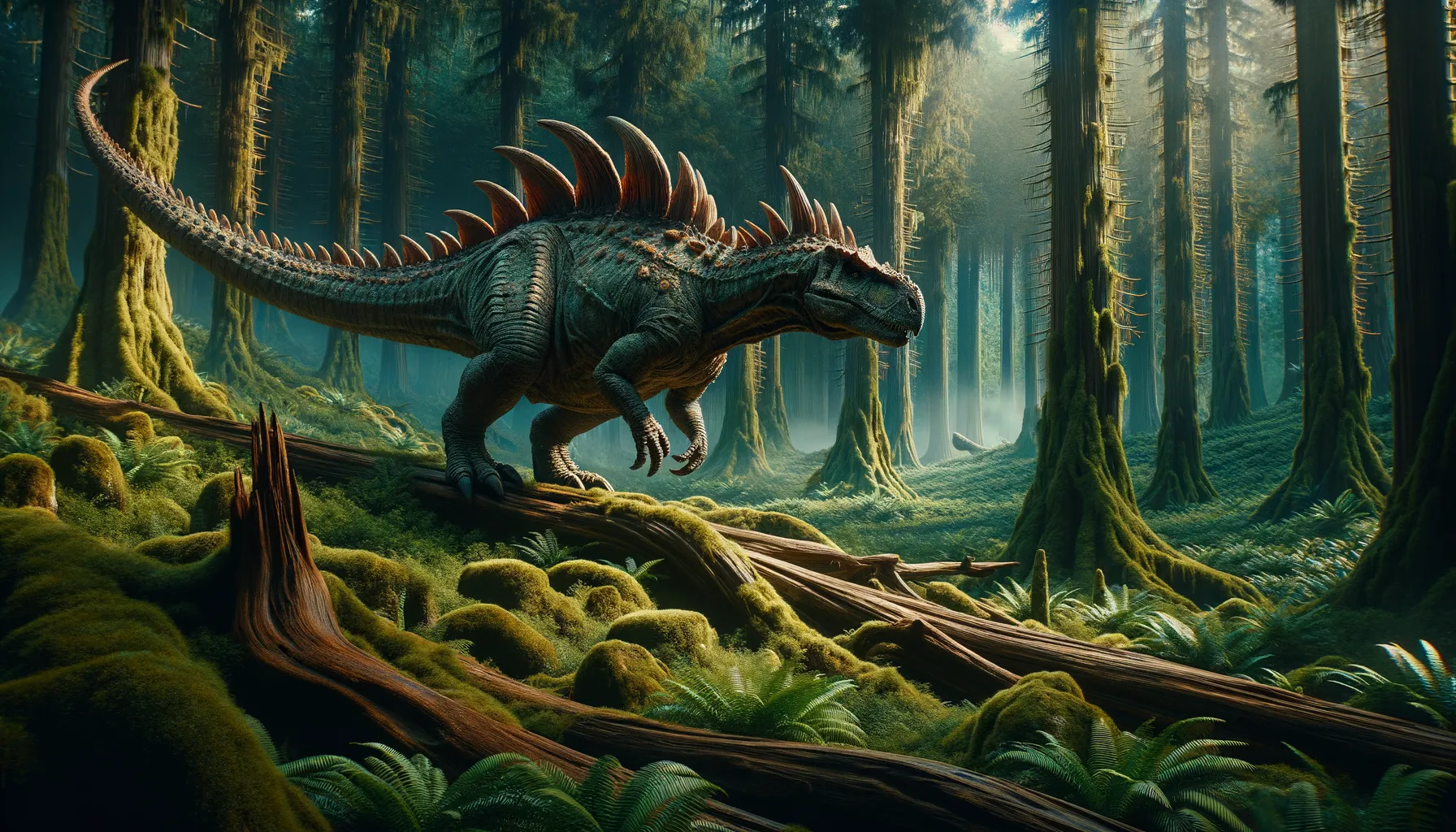
Zuul
Armored defender of the ancient forests!
Period
Cretaceous
Length
Approximately 6 meters long.
Height
Around 2 meters tall at the hip.
Weight
Approximately 5,500 pounds.
Zuul is an ankylosaurid dinosaur, characterized by its heavily armored body and distinctive tail club. It roamed North America during the Late Cretaceous period, living among lush forests and diverse wildlife. Its name, inspired by a mythical creature, references the unique features that make this dinosaur a standout among armored species. The discovery of Zuul has provided significant insights into the life and defense strategies of ankylosaurs.
Diet
Zuul was a herbivore, feeding on the plentiful vegetation of its time. Its diet likely consisted of low-lying plants, ferns, and shrubs, which it could efficiently strip away using its specialized teeth. Its stout body allowed it to consume large quantities of food for sustaining its massive size.
Hunting
Being a herbivore, Zuul did not hunt but spent much of its time grazing. It was well-equipped to protect itself from predators with its armored back and clubbed tail. This natural armor allowed it to focus on foraging without as much fear of carnivorous dinosaurs.
Environmental challenges
Living in the lush Cretaceous forests, Zuul faced various environmental challenges, such as droughts or seasonal food shortages. It had to adapt to changes in vegetation and fluctuating climate conditions. These challenges were compounded by the presence of large predators, requiring constant vigilance and effective defense mechanisms.
Speed
Likely slow-moving due to its heavy, armored build.
Lifespan
Estimated to live around 20-30 years.
First discovery
Discovered in Montana in 2014.
Fun Facts
- Zuul is named after a monster from the 1984 movie Ghostbusters due to its armored body and distinctive facial features.
- Zuul lived during the Late Cretaceous period, about 75 million years ago.
- It was an herbivorous dinosaur, meaning it primarily ate plants.
- Zuul belonged to the ankylosaur family, known for their heavy armor and club-like tails.
- The dinosaur's full name, Zuul crurivastator, translates to 'destroyer of shins,' highlighting its powerful tail weapon.
- Zuul's fossil was discovered in the badlands of northern Montana, USA.
- Its fossil is remarkably well-preserved, providing scientists with critical insights into the skin and armor of ankylosaurs.
Growth and Development
Zuul hatchlings started small and vulnerable, growing steadily under the protection of their parents. They developed their armor over time, which became a crucial defense feature in adulthood. This growth included not only size but also the density of their defensive structure, which became fully formed as they matured.
Habitat
Zuul thrived in a variety of habitats, including dense forests and semi-open areas where vegetation was plentiful. These environments offered abundant resources for its herbivorous diet, as well as cover and protection. The diverse landscapes provided opportunities for Zuul to interact with other species and navigate its complex ecosystem.
Interaction with other species
Zuul likely coexisted with both other herbivorous and carnivorous dinosaurs, navigating its environment with care and caution. Its primary defense against predators was its heavy armor and tail club, which discouraged many threats. While interactions with other non-predatory species may have been peaceful, competition for resources could occasionally cause tensions.
Natural lifespan
In the absence of disease or predation, Zuul could have lived up to 30 years.
Reproduction
Zuul likely reproduced by laying eggs, as evidenced by fossil findings in similar species. Nesting behavior might have been communal, providing extra safety for vulnerable eggs. Parental care could have included guarding nests against threats and keeping young close until their defenses developed.
Social behaviour
Zuul might have lived in small groups, providing mutual protection against predators. Social interactions could have included coordinated movements and communal living spaces. The dynamics of their social structure remain uncertain due to limited direct evidence but likely revolved around shared defensive strategies.
Fossil locations
Fossils of Zuul have been primarily found in Montana, USA, indicating its presence in North America during the Late Cretaceous. The discovery site provided well-preserved specimens, offering detailed insights into its anatomy and lifestyle. This location is part of a region rich in other dinosaur fossils, contributing significantly to our understanding of the era.
